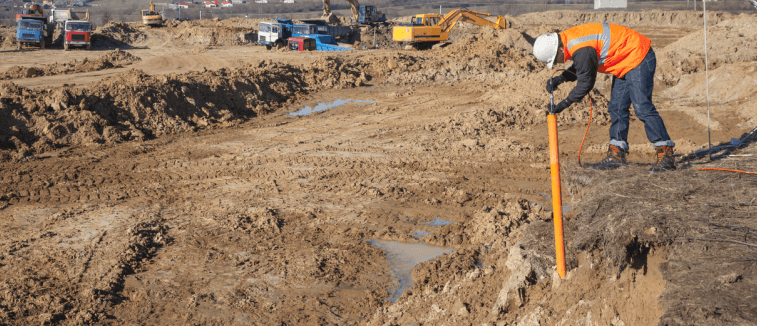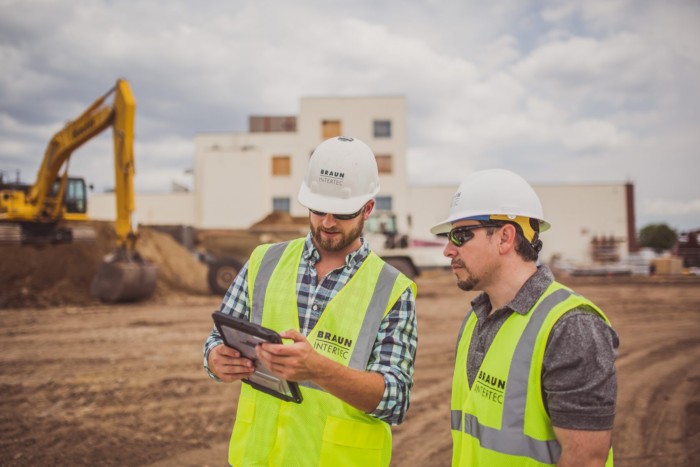The Interdisciplinary Approaches in the Geotechnical Industry: Connecting the Gap In Between Design, Geology, and Environmental Science for Optimal Project End Results
The combination of engineering, geology, and environmental science within the geotechnical industry is not merely helpful; it is critical for attaining optimal project outcomes. What techniques might arise to promote this crucial partnership and improve the efficiency of geotechnical methods?
Importance of Interdisciplinary Cooperation
The importance of interdisciplinary partnership in the geotechnical sector can not be overemphasized. Efficient geotechnical projects call for the assimilation of diverse knowledge from numerous areas, including engineering, geology, and environmental scientific research. This cooperation ensures that all aspects of a project are taken into consideration, causing detailed options that deal with complex challenges.
Interdisciplinary cooperation fosters innovation by allowing experts to share insights and methodologies that might not appear when working in isolation (engineer of record). By leveraging the toughness of several disciplines, groups can identify prospective dangers, enhance layout procedures, and enhance the sustainability of geotechnical projects. In addition, such cooperation advertises an all natural understanding of site-specific conditions, which is critical for exact evaluation and decision-making.
The intricacy of geotechnical jobs demands a collaborated strategy to analytical. Ultimately, interdisciplinary cooperation is crucial for advancing finest practices and accomplishing quality in the geotechnical market.
Trick Roles of Each Discipline
Collaboration among various self-controls is not simply useful; it is crucial for the effective implementation of geotechnical tasks. Each self-control-- engineering, geology, and ecological scientific research-- plays a distinctive yet interconnected duty that contributes to forecast efficiency and sustainability.
Geotechnical engineers are mainly in charge of developing foundations and guaranteeing architectural honesty. They analyze soil and rock homes to examine load-bearing capabilities, offering necessary information for safe building and construction methods. Their competence makes it possible for the formulation of innovative services to complex obstacles.

Environmental researchers evaluate the potential impacts of building and construction on ecosystems and water resources. They perform environmental analyses and create reduction methods to minimize damaging impacts. By incorporating eco-friendly factors to consider, they guarantee compliance with policies and advertise sustainability throughout the task lifecycle.
Case Research Studies of Effective Integration
Effective assimilation of geotechnical self-controls can be exhibited with different study that highlight the efficiency of teamwork in addressing complex design challenges. One noteworthy example is the building and construction of the Hong Kong-- Zhuhai-- Macau Bridge, where a joint technique involving geotechnical engineering, geology, and ecological science was critical. Engineers and geologists operated in unison to evaluate the seabed conditions and enhance the structure design, making certain security and decreasing ecological impact.
One more impactful instance is the renovation of incline stability in the San Francisco Bay Area, where an interdisciplinary team combined geotechnical evaluation with ecological assessments. By integrating geological studies and hydrological studies, the team properly determined potential landslide risks and carried out reliable mitigation procedures, improving security and sustainability.
In addition, the redevelopment of Brownfield websites frequently requires a multidisciplinary technique. In one instance in Chicago, collaboration among geotechnical designers, ecological researchers, and urban organizers resulted in the successful removal of infected dirt, permitting the safe makeover of the site into a community park. These study highlight that interdisciplinary collaboration not only addresses technical difficulties but additionally fosters ingenious options that benefit both tasks and areas.
Challenges in Multidisciplinary Projects

In addition, collaborating routines and operations amongst various groups can be bothersome, particularly when each self-control has unique project landmarks and deliverables. This misalignment can lead to delays and enhanced prices. The challenge of source allotment likewise looms big; making certain that specialized proficiency is available at vital points needs cautious preparation and insight.
Lastly, regulative compliance poses another substantial obstacle. Each technique may deal with various governing frameworks, and straightening these requirements to satisfy task objectives can be complex and taxing. Attending to these challenges demands strong leadership and reliable interaction techniques to cultivate cooperation and make certain that multidisciplinary groups work cohesively towards shared objectives.
Future Trends in Geotechnical Practices
As the geotechnical sector progresses, arising fads are improving methods to deal with the challenges dealt with in multidisciplinary projects - consulting engineer. One considerable fad is the raised combination of innovative modern technologies, such as fabricated knowledge and artificial intelligence, right into geotechnical evaluation and design. These technologies enhance anticipating modeling and danger assessment, making it possible for designers to make even more informed decisions throughout the project lifecycle

Moreover, the adoption of electronic doubles and real-time tracking systems is becoming a lot more prevalent. These tools assist in recurring assessment of dirt problems and architectural performance, permitting for timely treatments when problems emerge.
Verdict
In final thought, the assimilation of design, geology, and ecological scientific research is vital tailings engineer for accomplishing ideal results in the geotechnical market. Interdisciplinary collaboration promotes technology, boosts analytic capacities, and straightens technological needs with ecological sustainability. Effective case research studies show the benefits of this approach, while recognizing the obstacles encountered in multidisciplinary tasks. Looking in advance, accepting these collective methods will be necessary for navigating future patterns and advancing the field of geotechnical design.
The integration of design, geology, and ecological science within the geotechnical sector is not simply advantageous; it is essential for attaining ideal task results. Efficient geotechnical projects call for the combination of varied knowledge from various areas, including engineering, geology, and YOURURL.com ecological scientific research.Browsing the complexities of multidisciplinary tasks in the geotechnical industry presents a number of significant difficulties.As the geotechnical industry develops, arising trends are improving methods to deal with the challenges dealt with in multidisciplinary tasks. Geotechnical engineers are significantly working together with environmental scientists to make sure that tasks straighten with sustainability objectives and abide with regulatory demands.
Comments on “Why Hiring a Geo Tech Engineer is Vital for Complex Building Jobs”